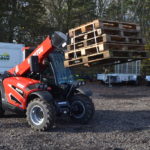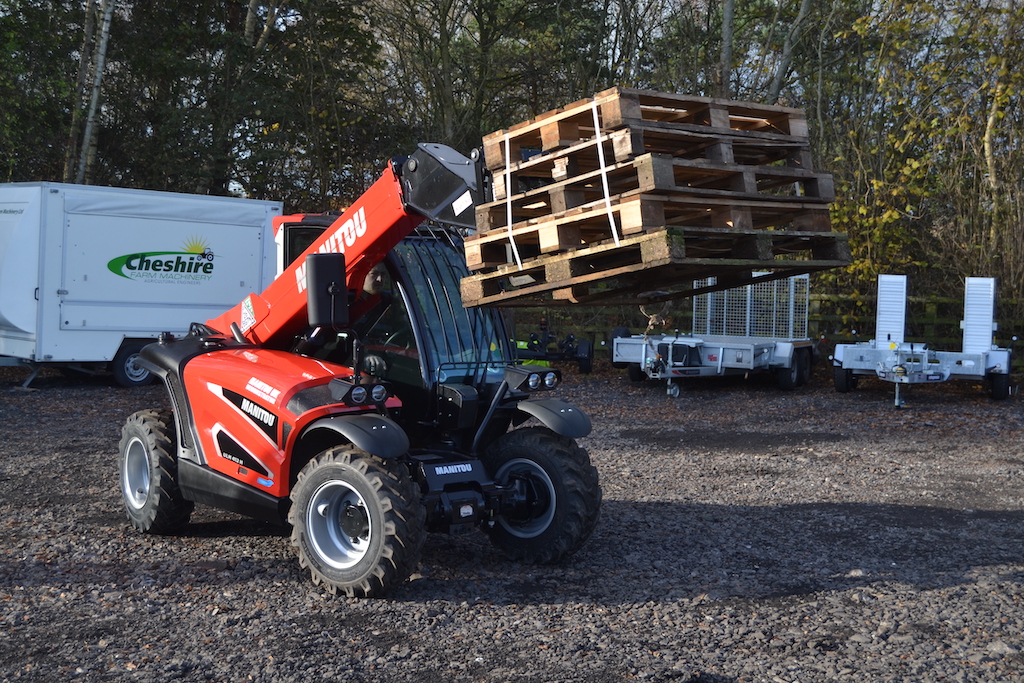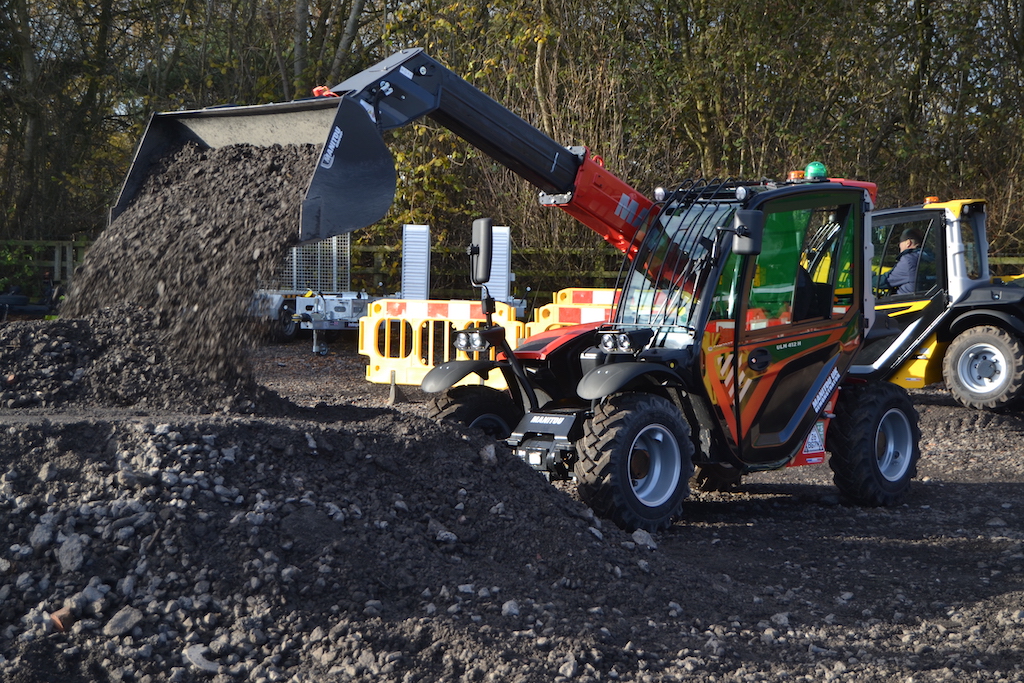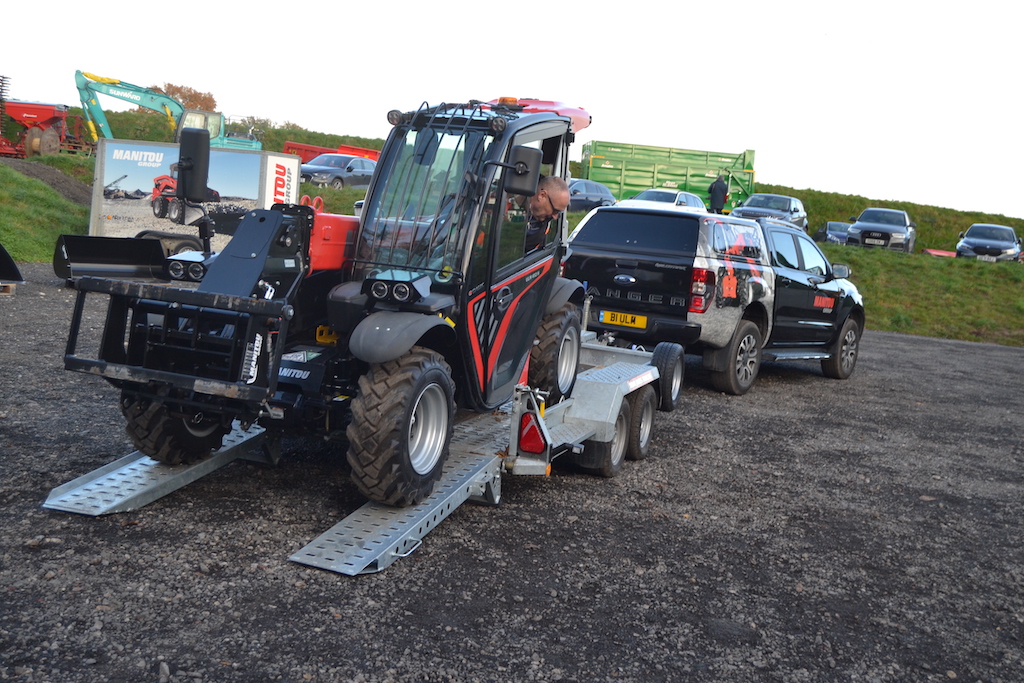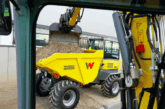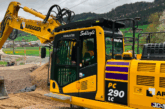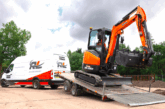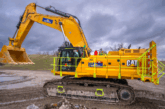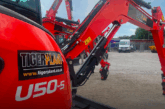The Ultra Light Manitou (ULM) is proving that good things really do come in small packages. Construction Plant News investigates the French manufacturer’s most compact telehandler to date.
Even the smallest of contractors have now seen the wisdom of utilising construction plant on site. Add to that the proliferation of tight sites – particularly in urban locations – and the need for machinery that can be easily moved from site to site, operate in confined spaces, and do all of that without a compromise on performance, and a small wonder is a prerequisite. Manitou thinks it has the answer to all of the above, and what is already a comprehensive range of solutions now joined by the ULM, a unit that can be transported to the jobsite on a 3 ½ tonne trailer towed by a pick-up or LCV.
Produced in its factory in Lille, where the hugely popular MT 625 already rolls of the production line, the ULM is not one machine but a range, and will also be available in under the Gehl brand as the GCT (Gehl Compact Telehandler). The two Manitou models are designated as the ULM 412 H with a 1.25 tonne lift capacity, and the 415 H with a 1.5 tonne. Chassis, boom and cab are all identical on both options with the extra lift achieved through a larger rear counterweight.
This is a solution that is intended to appeal to a wide range of sectors, including agriculture, construction and landscaping, and an enhanced level of versatility is achieved through an extensive choice of attachments. There are, in fact, twenty to choose from, all of which are available with the three different head-stop brackets. There’s two set of forks – fixed and floating – two buckets at 400ltr and 760litre respectively, as well as a 4-in-1, and much more besides.
Key to the ULM concept is transportability. The 412 weighs in between 2,550kg or 2,750kg, depending on what options are added, whilst the larger capacity 415 sits at 2,700kg to 2,900kg. A compact design doesn’t detract from performance, however. A maximum lifting height of 4.3m, with a 1m reach at full height makes it adept at tipping into a trailer or loading and unloading bags of sand from a vehicle, for example. Add to that a 2.6m forward reach and you have an impressive load chart and working range.
To be genuinely transport-friendly size matters and the ULM is a highly manoeuvrable 1.49m in width and 1.92m in height, which also makes narrow spaces accessible on site. Add to that a 3 ½m length and a 12×6 trailer is more than accessible and, indeed, is the recommended size. Ground clearance when moving on and off a beavertail or swan’s neck trailer is equally important, and on these machines it is generous. Limited slip differentials on the front and rear axle will also increase traction and safety when loading via the likes of wooden ramps.
The boom shares many of the designs of the well-established MT 625 telehandler. All Manitou hoses that go to the front end of the boom are internal, for example, increasing protection and reducing downtime, with bucket cylinders equally protected underneath, and there’s the option of specifying two auxiliary services to the boom head.
In terms of dashboard and controls, Manitou has harmonised many of the in-cab features across its portfolio and that’s reflected in the driver space in the ULM, which includes the manufacturer’s JSM joystick. The result is a clear and easy-to-use system, that rental customers can easily familiarise themselves with. Feedback to the operator via pop up notifications communicates the status of the machine and application clearly, and there’s a number of creature comforts.
A unique feature on the ULM is a polycarbonate roof window that increases load visibility at height, whilst maintaining the integrity of a FOPS/ROPS cab. Operators will welcome the all-round vision from the driver’s seat, which is facilitated by the engine positioned on the right-hand side and the boom straight down the middle, offering good overall balance on either side and excellent lines of sight.
Power is derived from a 35hp Yanmar engine, with DOC (diesel oxidation catalyst) and DPF (diesel particulate filter) after-treatment. Many contractors are focusing on idling as an easy win in fuel consumption – as well as reducing emissions – and the technology is now available to help. A stop/start system reduces idling by switching off the engine when the machine is not in use, for instance, saving diesel and the hours accrued on the telehandler.
Hydraulic flow is 48ltr/min, which is higher than many machines on the market, and all that oil is pushed through a valve chest that benefits from flow sharing, which means combined movements, and multi-functioning is possible. The pump size can be increased as an option to 62ltr/min which provides more oil flow to the end of the boom.
The ULM design is weight-conscious at every turn and that includes a hydraulic oil tank with just a 39ltr capacity. The tank can be reduced to that size thanks to an anti-aeration filter, which removes any bubbles, and allows the oil to be moved around the system more quickly. A new feature for telehandlers is the ULM’s electronic compensation system. It’s a technology that is already in use in Manitou’s access platforms, and again reduces the number of components – as well as the weight of the machine. Activated by an angle sensor on the back of the boom – and a length measurement sensor inside the bucket cylinder – the carriage angle is then adjusted to keep the bucket in the same position.
Manitou is no stranger to the compact telescopic handler, with the MLT 420 unit currently the smallest in its portfolio, but the ULM provides an unrivalled level of versatility. Ease of transportation is combined with performance and on-site manoeuvrability to produce a very versatile solution.

